Online Engineering Mechanics Test - Engineering Mechanics Test 6
- This is a FREE online test. Beware of scammers who ask for money to attend this test.
- Total number of questions: 20.
- Time allotted: 30 minutes.
- Each question carries 1 mark; there are no negative marks.
- DO NOT refresh the page.
- All the best!
Marks : 2/20
Test Review : View answers and explanation for this test.
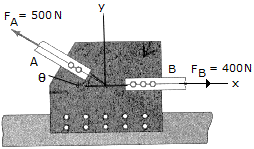
Determine the design angle  for connecting member A to the plate if the resultant force is to be directed vercially upward. Also, what is the magnitude of the resultant?
for connecting member A to the plate if the resultant force is to be directed vercially upward. Also, what is the magnitude of the resultant?

Two forces act on a block. Determine the angle  between them.
between them.

A "scale" is constructed with a 4-ft-long cord and the 10-lb block D. The cord is fixed to a pin at A and passes over two small pulleys at B and C. Determine the weight of the suspended block E if the system is in equilibrium when s = 1.5 ft.
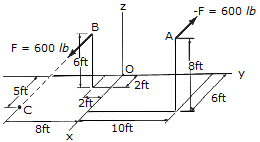
Determine the couple moment. Use a vector analysis and express the result as a Cartesian vector.

Determine the horizontal and vertical components of reaction at the pin A and the reaction at the roller support B required for equilibrium of the truss.
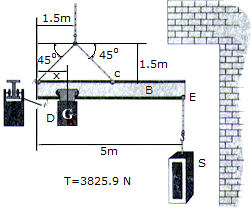
If the boom in the previous problem is to remain horizontal when the stone S is removed, what is x?
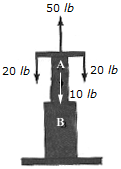
The axial forces act on the shaft as shown. Determine the internal axial force at points A and B.
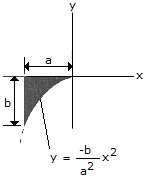
Locate the centroid of the exparabolic segment of area.
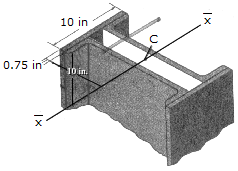
The composite cross section for the column consists of two cover plates riveted to two channels. Determine the radius of gyration k with respect to the centroidal
with respect to the centroidal 
 axis. Each channel has a cross-sectional area of Ac = 11.8 in.2 and moment of inertia (I
axis. Each channel has a cross-sectional area of Ac = 11.8 in.2 and moment of inertia (I  )c = 349 in.4.
)c = 349 in.4.
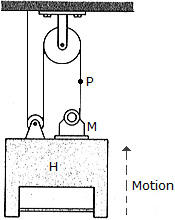
If the hoist H is moving upward at 6 ft/s, determine the speed at which the motor M must draw in the supporting cable.
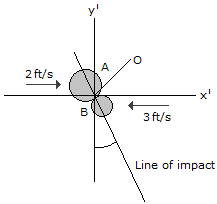
Two coins A and B have the initial velocities shown just before they collide at point O. If they have weights of WA = 13.2(10-3) lb and WB = 6.6(10-3) lb and the surface upon which they slide is smooth, determine their speed just after impact. The coefficient of restitution is e = 0.65.
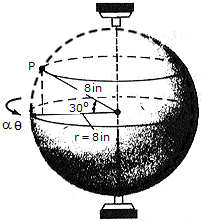
The sphere starts from rest at  = 0 and rotates with an angular acceleration of
= 0 and rotates with an angular acceleration of  = (4
= (4 ) rad/s2, where
) rad/s2, where  is measured in radians. Determine the magnitudes of the velocity and acceleration of point P on the sphere at the instant
is measured in radians. Determine the magnitudes of the velocity and acceleration of point P on the sphere at the instant  = 6 rad.
= 6 rad.
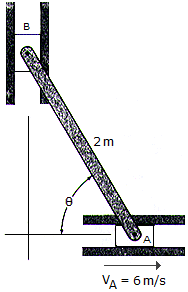
The 2-m-long bar is confined to move in the horizontal and vertical slots A and B. If the velocity of the slider block at A is 6 m/s, determine the bar's angular velocity and the velocity of block B at the instant  = 60°.
= 60°.
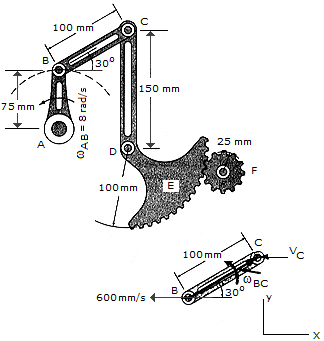
The rotation of link AB creates an oscillating movement of gear F. If AB has an angular velocity of  AB = 8 rad/s, determine the angular velocity of gear F at the instant shown. Gear E is a part of arm CD and pinned at D to a fixed point.
AB = 8 rad/s, determine the angular velocity of gear F at the instant shown. Gear E is a part of arm CD and pinned at D to a fixed point.
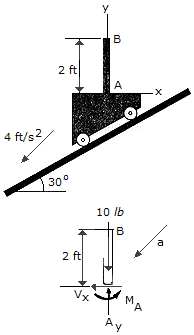
Bar AB has a weight of 10 lb and is fixed to the carriage at A. Determine the internal axial force Ay, shear force V , and moment MA at A if the carriage is descending the plane with an acceleration of 4 ft/s2.
, and moment MA at A if the carriage is descending the plane with an acceleration of 4 ft/s2.
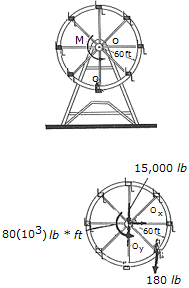
A man having a weight of 180 lb sits in a chair of the Ferris wheel, which has a weight of 15,000 lb and a radius of gyration of ko = 37 ft. If a torque of M = 80(103) lb • ft is applied about O, determine the angular velocity of the wheel after it has rotated 180°. Neglect the weight of the chairs and note that the man remains in an upright position as the wheel rotates. The wheel starts from rest in the position shown.

If the 3-lb solid sphere is released from rest when  = 30°, determine its angular velocity when
= 30°, determine its angular velocity when  = 0°, which is the lowest point of the curved path having a radius of 11.5 in. The sphere does not slip as it rolls.
= 0°, which is the lowest point of the curved path having a radius of 11.5 in. The sphere does not slip as it rolls.
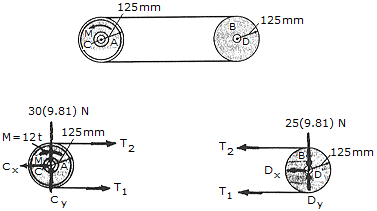
The flywheel A has a mass of 30 kg and a radius of gyration of kc = 95 mm. Disk B has a mass of 25 kg, is pinned at D, and is coupled to the flywheel using a belt which is subjected to a tension such that it does not slip at its contacting surfaces. If a motor supplies a counter-clockwise torque or twist to the flywheel, having a magnitude of M = (12t) N • m, where t is measured in seconds, determine the angular velocity of the disk 3 s after the motor is turned on. Initially, the flywheel is at rest.
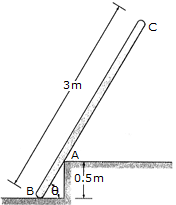
The uniform pole has a mass of 15 kg and falls from rest when  = 90° until it strikes the edge at A,
= 90° until it strikes the edge at A,  = 60°. If the pole then begins to pivot about this point after contact, determine the pole's angular velocity just after the impact. Assume that the pole does not slip at B as it falls until it strikes A.
= 60°. If the pole then begins to pivot about this point after contact, determine the pole's angular velocity just after the impact. Assume that the pole does not slip at B as it falls until it strikes A.
 = -b/4
= -b/4 , vB = 3.46 m/s 9
, vB = 3.46 m/s 9